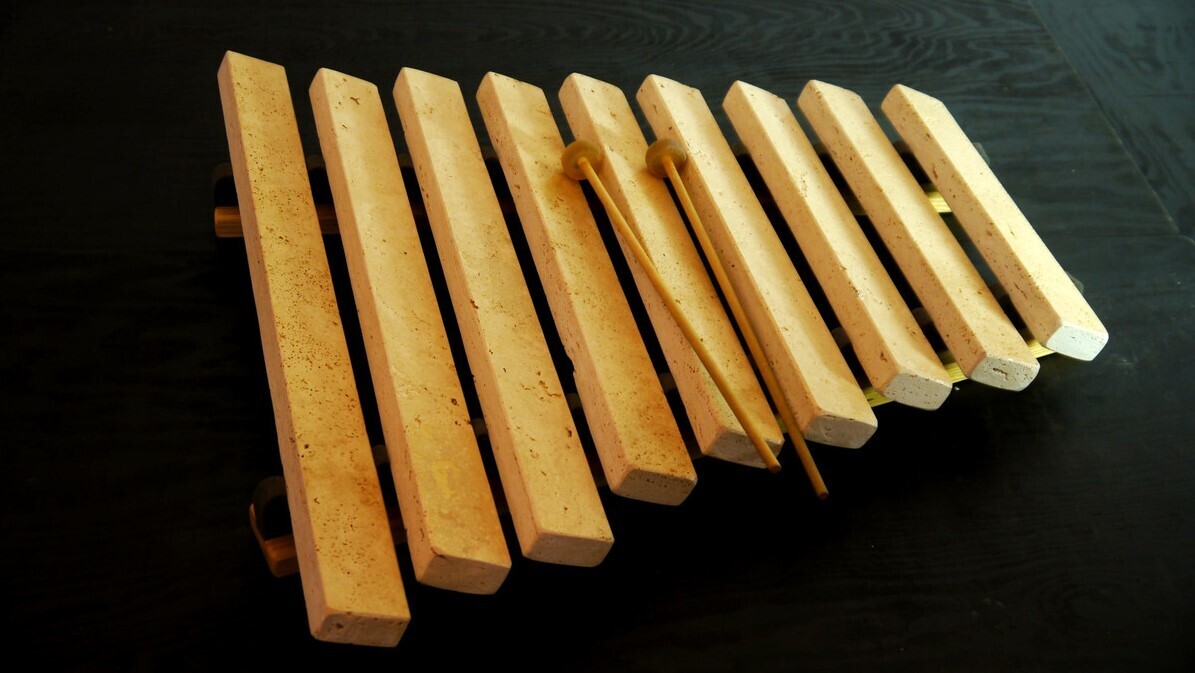Lithophone Travertine, 9 notes, Balinese tuning
Lithophone Travertine, 9 notes, Balinese tuning G B C# D F# G B C# D
These travertine sound bars are 6cm wide and 3cm thick. They are twice as thick as they are wide. Because the ratio is 2:1, they sound an octave higher on the narrow side than on the wide side. These stones have a sound that is reminiscent of water. In fact, they are caused by limescale deposits in the water. So they tell us about their creation through the sound.
These lithophone stones are made of Roman travertine. This is a distinctly layered limestone, formed by sedimentation in fresh water. The many small pores in it are evidence of plant parts that were subsequently decomposed. It consists exclusively of calcium carbonate, one of the most common compounds in sedimentary rocks on Earth. This occurs in the form of the mineral calcite, which is also one of the most common minerals in the earth's crust.
Sound stones made of travertine in this form can produce sounds that are so extremely pure and rich in overtones.
This lithophone is tuned to a Balinese scale g'- d``: G B C# D F# G B C# D. This corresponds to a sequence of tones used in traditional Gamelan music, used for thousands of years in Bali (Indonesia). Gamelan music takes you to ancient archaic worlds.












